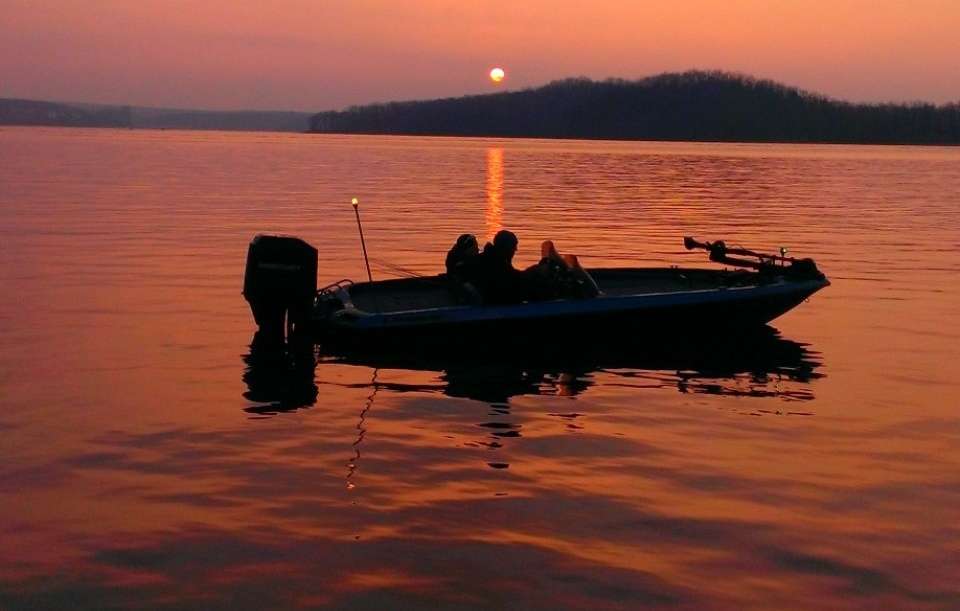
Osage Beach, Mo. — Lake of the Ozarks will showcase its superb bass fishing during three B.A.S.S. events slated for the lake.
The Central Missouri reservoir will host the Carhartt Bassmaster College Midwest Conference Regional March 29-31, followed by the Costa Bassmaster High School Midwest Open April 2 and the B.A.S.S. Nation Central Regional April 5-7.
While he had not been on the Lake of the Ozarks for more than a decade, Bassmaster Elite Series pro Mike McClelland said he was reminded of how much fun it was to fish there when he recently competed in the Missouri Invitational Fishing and Golf Championship at the lake. The Buena Vista, Ark., pro honed his skills fishing tournaments at Ozark highland reservoirs, including Lake of the Ozarks.
The northernmost reservoir in the Ozark foothills has some similarities and differences in comparison to the other Ozark highland lakes McClelland has fished. “The biggest thing that makes Lake of the Ozarks such an incredible fishery is all of the boat docks on the lake (similar to Oklahoma’s Grand Lake),” McClelland said. “So many of the fish are protected from angling most of the year because of all the cover boat docks allow them to have.”
“The lake is also extremely fertile and has a huge concentration of shad,” he said. “It just has a huge forage base including bluegill and crappie that is absolutely phenomenal. I really believe that more bass forage on crappie than we can ever imagine.”
The Lake of the Ozarks features the same defined creek channels and turns as the rest of the Ozark highland reservoirs. “As an Ozark angler the one thing you really learn to rely on are fishing those channel turns and figuring out what part of the channel turns the fish are in,” McClelland said. “There are some days when bass are going to be on the very ends of those and there are times of the year when they are going to be in the middle of them. Once you figure out where the fish are set up in those channel bends in the major creek arms it can really be an easy way to duplicate the pattern throughout the course of the lake.”
McClelland believes the major difference between Lake of the Ozarks and its Ozark highland neighbors is the lake’s productivity throughout its 54,000 acres. “What really amazes me about Lake of the Ozarks is the consistency of the lake from end to end,” he said. “The versatility the lake has to offer is unbelievable.”
Any time he competed on the Lake of the Ozarks McClelland thought the tournament could be won in any section of the lake. “I really believed the lake could potentially produce a winning stringer nearly from (Bagnell) dam as far up the (Osage) river as you can go at any given time,” he said. “Whereas (the Ozarks lakes of) Table Rock, Bull Shoals and Beaver really fish sketchier and there are times when certain sections of those lakes are working and the rest of those lakes don’t seem to be on.”
During the two-week period in the spring when the three B.A.S.S. events come to the lake, most of the bass will be in the prespawn stage. McClelland recommends the competitors key on the black rocks Ozark anglers call “lava” rock. “Any of those areas where you have that dark-colored rock close to gravel transition areas are really key focus points for me that time of the year,” McClelland said. “I think the heat from those dark-colored rocks pulls up those fish especially when they are getting closer to that spawning period. “
McClelland’s favorite lures to throw for prespawn Ozark bass in clear to stained water are Spro McStick 110 and 115 stickbaits and Spro RkCrawler crankbaits. “If the water gets really dirty, Lake of the Ozarks is a good spinnerbait lake in the spring,” McClelland said.
For more information on lodging and dining at the Lake of the Ozarks, visit www.funlake.com or call the Lake of the Ozarks Convention and Visitor Bureau at 1-800- 386-5253.
Copies of John Neporadny’s book, THE Lake of the Ozarks Fishing Guide, are available at www.jnoutdoors.com.

